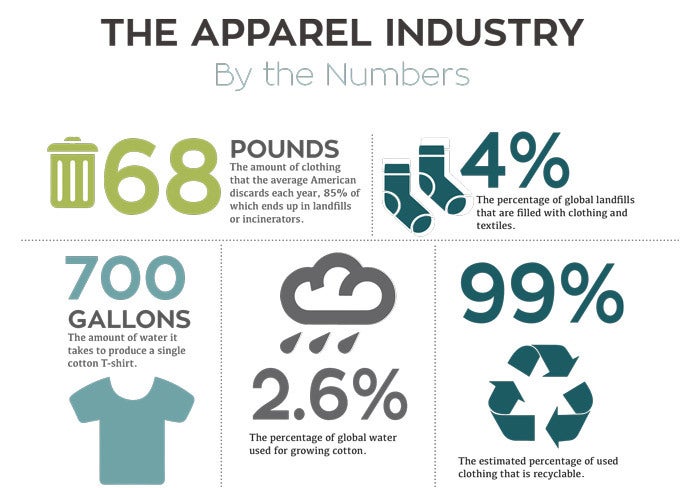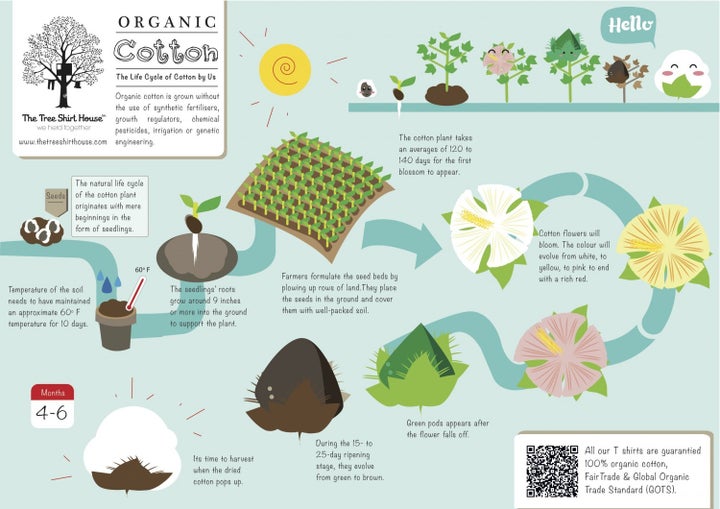
85% of clothing ends up in landfills.
“85% of the apparel we buy ends up in landfills,” Annie Gullingsrud on Green Connections Radio
Hurricane victims are replacing all their stuff – clothing, shoes, furniture, handbags, dishes, etc. Houston, Florida, Puerto Rico, U.S. Virgin Islands…imagine how much stuff that is... Imagine if they all replaced even 10 percent of it with sustainable options....
The gift-giving season is upon us too, and at a time when the economy overall is doing better overall, it’s tempting to spend generously on new things for our loved ones, friends and coworkers.
But before you whip out your credit card, remember the recent National Climate Assessment, authored by 13 federal agencies (and approved for release by the Trump White House, by the way) says climate change is man-made. That means, our choices matter, so think before you buy.
Experts are predicting there will be more plastic in the oceans than fish by 2050. Imagine that…and plastic in the fish…
Annie Gullingsrud, Director of Apparel at the Cradle to Cradle Innovation Institute told me on my radio show-podcast Green Connections Radio that 85 percent of the apparel we buy ends up in landfills. So, imagine almost your entire closet in a landfill, times 310,000,000 people (n the U.S.).
What is the environmental impact of that new sweater or designer dress? Or of those beautiful boots or pretty new dishes that could dress up your Thanksgiving table?
For our series on the apparel industry, I recently visited the Textile Exchange Conference and was blown away by the cool things the fashion industry is doing to reduce their massive environmental impact (some sources have said fashion is the second dirtiest industry, next to oil). Many manufacturers and retailers now have sustainability departments and are leveraging their economic influence to incentivize their suppliers to reduce their environmental impact – that is, use less energy and water, and generate less waste.
Then there are those that have been ahead of the curve for years, quietly: Lenzing Fibers has been making textiles like Tencel from wood (but feel amazingly silky) for 25 years. Stella McCartney has been making shoes without leather and is now making backpacks and other items from recycled plastic retrieved from the ocean.
For the eight days of Christmas, here are eight tips for mindful shopping:
1. Check for certifications: Look for Cradle to Cradle’s interlocking C’s, or labels certifying that it’s made from organic textiles, such as the GOTS (Global Organic Textile Standard), and Textile Exchange’s Responsible Wool, Organic Cotton 100 % or Blend or Recycled Content certifications.

Organic Content Standard label, Textile Exchange
2. Research online before you shop: Especially before you head to the store. Check out the Sustainable Apparel Coalition site, for example, for brands that have sustainable options. For example, search the name of your favorite running shoe and the word “sustainable” to see if there’s an eco-friendly version of it or another eco-friendly one you can wear.
3. Consider secondhand stores: Many items there are brand new and others are gently used. I buy household and office furniture from the Habitat for Humanity ReStore, for example, which is also less expensive, and the proceeds go to help build a home for a needy family. I know companies that buy only secondhand furniture for their offices too.
4. Ask questions about the environmental impact: Even in the store, and if they don’t know the answers, they’ll notice that you asked. Press them to find out the answer and get back to you, and get their contact information to follow up (and do). Ask if they use the Higg Index, for example, a tool the apparel industry uses to track and reduce environmental impact.
5. Recycle everything! Plastic shampoo bottles, plastic and paper/cardboard packaging, water and wine bottles and drink cans. Even if you have to carry it around for a bit until you find a recycling bin.
6. Give kids clean energy toys: There are lots of great toys today that teach about clean energy, from build-your-own windmill or electric vehicle, to a solar robot or eco-friendly 21st century mini-house.
7. Repair, reuse: Before you toss those shoes and buy new ones, consider if they can be repaired. It’s cheaper and eco-friendly, and besides, you already know they’re comfortable. I saw a woman on Shark Tank who invented a shoe base that comes with snap on parts to change the look and colors. Or there are shoes you with interchangeable heels.
8. Use canvas shopping bags: Canvas bags are not just for the food market (though they’ll come in handy for all those groceries for cooking and entertaining). Bring them to the store too. When buying online from one place, order as much at once as possible, so they ship it all in one box and save packaging and shipping materials.
Another step is while you’re switching your closet from season to season, donate used stuff. As we learned from Eileen Mockus, CEO of Coyuchi, you can even recycle your sheets. Donate clothes that you don’t wear or need anymore; they’ll bring comfort and joy to someone else and keep stuff out of landfills. Encourage your young gift-givers/receivers to do the same.
Every purchase makes a difference, so know that putting your money where your values are matters. When you give mindfully, you’re being a role model too.
For more on the National Climate Assessment, listen to one of the lead scientists on it, Kathy Jacobs, on my radio show-podcast, Green Connections Radio.

What makes organic cotton organic.
